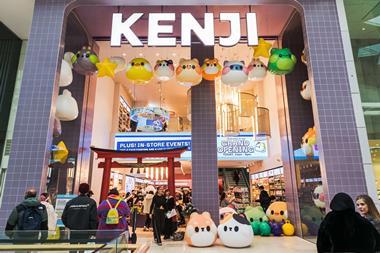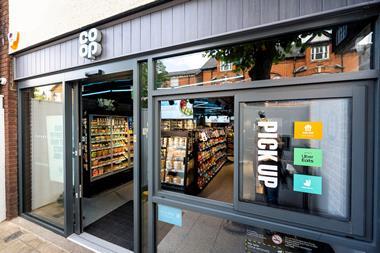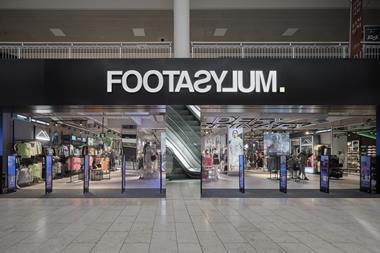John Ryan asks six industry experts for their predictions on what will happen with store design, budgets and new formats and also gives his own view. While the shutters are not about to come down on new store formats and interiors, almost inevitably, some retailers will take a keener look at the way in which money is spent. However, with expensive projects such as Grosvenor’s Liverpool One scheme and the much-vaunted Westfield London centre opening during the year, there is everything to play for.
Tim Greenhalgh
Chief creative officer, Fitch
Before discussing how design can help in tougher times, it is worth acknowledging that design and branding as a marketing tool is no longer a tap that can be turned off, as it has been in the past. In recent times, retail businesses and brands have invested far too much in their positioning, values and all manner of powerful visual manifestations to merely abandon that ship in stormy weather.
Overall in 2008, budgets will inevitably be reviewed and potentially tightened, but amen that we live in challenging and exciting times where the traditional is no longer the norm. Designing in these conditions is demanding and requires insight and invention to stand out from the mediocre. As consumers, we still want to be surprised and delighted – even if we are more concerned and uncertain about the future.
If anything, the prospect of a challenging year ahead will sharpen the way marketers present their brand, as they search for new and exciting ways to communicate their value proposition to consumers. Ultimately, design will contribute by understanding how the world is changing and what consumers expect from their shopping experiences and, as such, how to best present this – whatever the external factors.
Howard Saunders
Creative director, Echochamber
We’re asking for it – we’ve been waiting for a recession for years now. It’s more to do with emotion than economics. We won’t be disappointed. Recession is a natural leveller and when a cab costs a tenner for a half-mile schlep, you know we’re badly in need of a shake-up.
Accountants love recessions. They salivate at the thought of having an ever-tighter grip on those purse strings and we often let them take control altogether – we shouldn’t. If retail is about seducing us to buy things that we don’t really need but that make us feel better, we will need more emotional persuasion as things get tough. Design is a critical part of that seduction process and those retailers that succumb to joining the dump-bin army will be in danger of losing our respect.
I believe that we want a financial detox and the pleasure that comes from thrift. Clever retailers will make us feel worthy, rather than greedy – think elegant simplicity and solutions that actually help.
Retail is how we reward ourselves, so expect to see the value brands “push for posh” more enthusiastically, with spaces that make us feel better about our role in the rat race.
Bill Cumming
Creative director, Twelve
Let’s not forget that this is not the first time we have been in this position – when things last got challenging on the high street we used to say that “when the going gets tough, the tough go shopping”. This time around, things are a bit more complex – there is more competition, more channels, more choice and, by the looks of it, less on the never, never.
Those that keep it clear, simple and with customers at the heart of their proposition will be the ones who prosper. My thoughts are that retailers should focus on communicating, communicating, communicating. This does not have to be done through a sea of cardboard – look at how John Lewis manages to deliver its message through its environment, its partners and its products. When customers are feeling vulnerable, trust goes a long way. Marks & Spencer is also impressing, with the indulgence of its brand messages and the clarity of its communication.
What we all know is that burying our heads in the sand, or going down the hard discount route, is unlikely to win customers’ hearts, or wallets, in the long term. This is a time for retailers to be brave and adventurous and to fall in love with their customers again.
Bryan Roberts
Global research director, Planet Retail
With all the signs pointing to the fact that 2008 is going to a bit of a white-knuckle ride for the retail sector, we’re likely to see a mixed reaction from retailers. They are going to have to work harder to maintain footfall and prop up spending, and store design – along with pricing, customer service and quality of offer – is one of the key methods that businesses have at their disposal to retain existing custom and attract new shoppers.
It might be the case that some shoppers will trade down to the no-frills, discount end of the spectrum, but there will remain a core base of affluent shoppers that could be attracted by flair, innovation and investment in the in-store environment.
While it will be tempting for some retailers to chuck in the towel in terms of new formats or revamping their existing store base as they attempt to protect the bottom line, we will continue to see operators with a far-sighted approach maintaining innovation and investment in their shops. Given that stores are the key forums in which retailers can have a dialogue with their customers, it would be a crying shame to let in-store standards, or excitement, slip.
Niall Trafford
Executive, store design and specification, Marks & Spencer
Store design is going to remain high on Marks & Spencer’s agenda in 2008. While the economic year ahead may look uncertain, consumers will still want – and need – to shop for clothes, food and home products and will look for inspiring environments that offer a complete shopping experience, including hospitality.
As a sector, retailers’ design principles will need to continue to evolve and not stand still in order to meet the growing expectations of customers. At M&S, it is important that we continue with our store modernisation programme, developing stores that deliver enhanced service.
There is a sense that customers will place a higher importance on provenance, quality and ethical sourcing in 2008. Our job is to continue to design stores that make these products the heroes – to create the appropriate setting that will encourage customers to buy at M&S and tell their friends what a great shopping experience they have had, so that they come and visit us too.
Shopping spaces will need to be increasingly flexible. We have ranges, such as our Limited Collection, that are updated every four to six weeks, to offer customers newness. Our spaces need to reflect this, yet still be aspirational, which is why visual merchandising will continue to be an integral aspect of store design.
Developing sustainable solutions for materials and store operations will also drive store design forward in 2008. At M&S, this is reinforced through our Plan A goals and our commitment to creating stores from environmentally friendly materials, using energy- and water-conscious solutions for heating, ventilation, lighting and refrigeration.
Jon Tollitt
Creative director, Gensler
The early Sales joining hands with the Christmas rush offered the overstretched consumer a sense of relief. However, the belt-tightening forecast for 2008, combined with an air of uncertainty, will prove difficult for consumers and retailers alike.
Good, then, that some retailers can be relied on to get the basics right: good service, a wide choice and a pleasant environment. The opening of John Lewis in Cambridge just before Christmas was received with a certain level of euphoria (particularly by my wife). A strong, trusted brand, with a family feel and an environment that is better than the Oxford Street store – particularly the café – reinforces the need and trend for much-improved regional shopping where there is a demand. What’s more, it proves that good retail can enliven city centres outside London in many aspects.
A large number of regional malls and inner city developments are in the construction and planning stages and will take a longer-term view than any (hopefully) short-term slowdown. Confidence from retailers permeates through to customers who need entertainment and enjoyment, regardless of headlines bearing bad news.
People all over the country still want to live their lives and enjoy themselves in whatever way they feel fit. Be it health, fitness, food, drink, entertainment or even education, this is still retail in some shape or form and hopefully we will all continue to be enthusiastic and creative with the opportunities available.
If there is one trend that appears set to continue in 2008 and beyond, it has to be the push towards creating more sustainable store environments. This trend kicked off in 2007, but, in the majority of cases, retailers’ green stores are only at the pilot stage.
Both Tesco and Marks & Spencer have gained experience of how to be greener over the past 12 months and they must be looking at ways in which eco stores can be made to pay in the event of a slowdown in trade.
The business case for green stores remains contentious, but has to be the mainspring that will generate increasing numbers of retailers to join the cause.
John Ryan, stores editor, Retail Week


























No comments yet